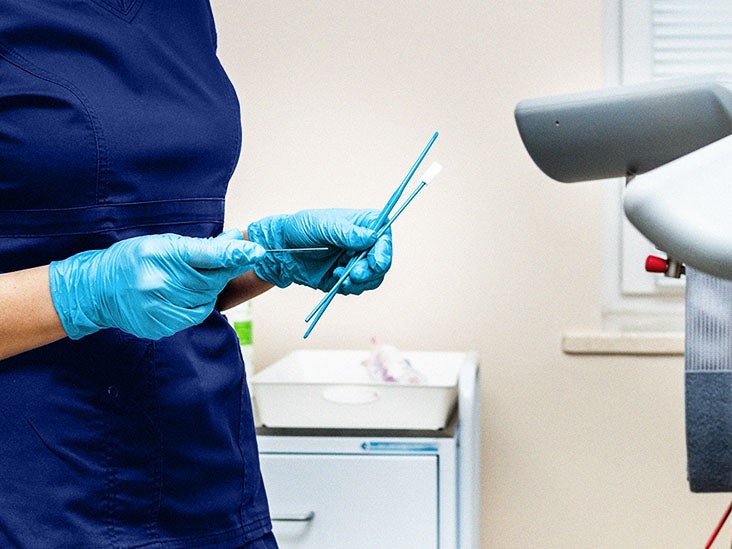High risk HPV: Types, treatments, and more - Medical News Today

There are many types of HPV. Most resolve on their own and are unlikely to cause health problems. However, some types are high risk if the infection remains in the body.
Human papillomavirus (HPV) is the most common sexually transmitted virus, with doctors diagnosing roughly
The virus can pass on through skin-to-skin vaginal, anal, or oral sex. A person may not realize that they have the infection because it sometimes causes no symptoms.
Read on to learn about the types of HPV, as well as testing, treatments, and methods of prevention.
Some types of HPV can cause cancer. This means that they are "high risk."
When a high risk type of HPV infects cells, it changes how they communicate with one another. It also causes the cells to multiply. Usually, the immune system becomes aware of these cells and regulates them.
However, if these abnormal cells remain, they can continue to change and become precancerous.
HPV infects the thin, flat squamous cells that line the inner surface of some organs. For this reason, most HPV-related cancers are called squamous cell carcinomas.
The virus can also cause cancer in the glandular cells of the cervix, and this cancer is called adenocarcinoma.
There are
At least
Non-oncogenic types usually cause no serious health issues. A doctor may refer to non-oncogenic types of HPV as "wart-causing HPV."
Low risk
Low risk, or non-oncogenic, types of the virus rarely cause precancerous lesions, though they may still cause cellular changes.
If certain low risk types of HPV remain in the body, they can cause genital warts. These are benign growths that can develop around the genitals, groin, and anus.
Around
These growths are often benign, but they can cause severe airway obstruction and complications. In extremely rare cases, these warts become cancerous.
High risk
Research suggests that HPV types 16 and 18 cause
Estimates suggest that high risk HPV causes
Read more about HPV in males.
In the early stages, cervical cancer may not cause symptoms. If symptoms do occur, they
- abnormal vaginal bleeding
- abnormal discharge from the vagina, with a strong odor or containing blood
- pain during sex
- pelvic pain
High risk HPV can also affect cells in other areas, and this may also develop into cancer. Other HPV-related cancers
The
Because HPV can develop without causing symptoms, regular screenings are an important way of detecting any changes early. Anyone with a weakened immune system or a medical history of cervical lesions may need more frequent screening.
Currently, cervical cancer is
The United States (U.S.) Preventive Services Task Force recommends that anyone who has a cervix and is 21–29 years old has cervical cancer screening every 3 years.
For anyone who has a cervix and is 30–65 years old, the task force recommends having an HPV test and Pap smear every 5 years or a Pap smear alone every 3 years.
The Centers for Disease Control and Prevention (CDC) do not recommend that males have routine testing for HPV.
Screenings
A Pap test, or Pap smear, was once the only type of screening for cervical cancer.
It involves collecting cells from the cervix. This only takes a few minutes and is an outpatient test. The doctor sends the sample to a lab, which checks for abnormalities in the cervical cells.
Cervical cancer screening now also includes HPV testing. In some cases, a doctor may recommend having a Pap test and an HPV test at the same time.
A Pap test involves checking the cells for precancerous changes. An HPV test looks for the DNA of the virus. A doctor may only order this test if a person likely has a high risk infection.
The results of both a Pap test and an HPV test give the doctor
Learn what to expect from cervical screening.
There is currently no treatment for the infection. But treatments can address the health problems that HPV causes.
Although
Surgery is necessary to remove precancerous cells caused by high risk HPV. This is to prevent the cells from becoming cancerous. A doctor can remove these cells from the cervix with a procedure called loop electrosurgical excision or with cervical cryotherapy.
The treatment for HPV-related cancer tends to be the same as the treatment for other cancers in the area. The best approach can depend on the location, type, and stage of cancer. Examples of these treatments include:
A person can
- getting the HPV vaccine
- consistently using barrier methods, such as condoms or dental dams, during sex
- limiting the number of sexual partners
Gardasil 9 is the HPV vaccine available in the U.S. It protects people from several high risk types of HPV, including types 16 and 18 — as well as the low risk types associated with warts.
The CDC says that, ideally, everyone should receive the HPV vaccine at
After receiving the required vaccine doses,
For people who are older than 27 and have a risk of new HPV infection, a doctor may discuss the benefits of receiving the vaccine, though it may be less effective.
For most people with HPV, the infection clears within
With regular cervical screening, doctors are more likely to catch any cell abnormalities before they become cancerous.
If a doctor detects abnormal changes, treatment can start early, and this improves the outlook.
HPV infections are very common, and the body's immune system usually clears them. The infection can remain in the body and cause health problems in some cases.
Getting the HPV vaccine and having regular cervical screening reduces the risk of these health problems.

Comments
Post a Comment